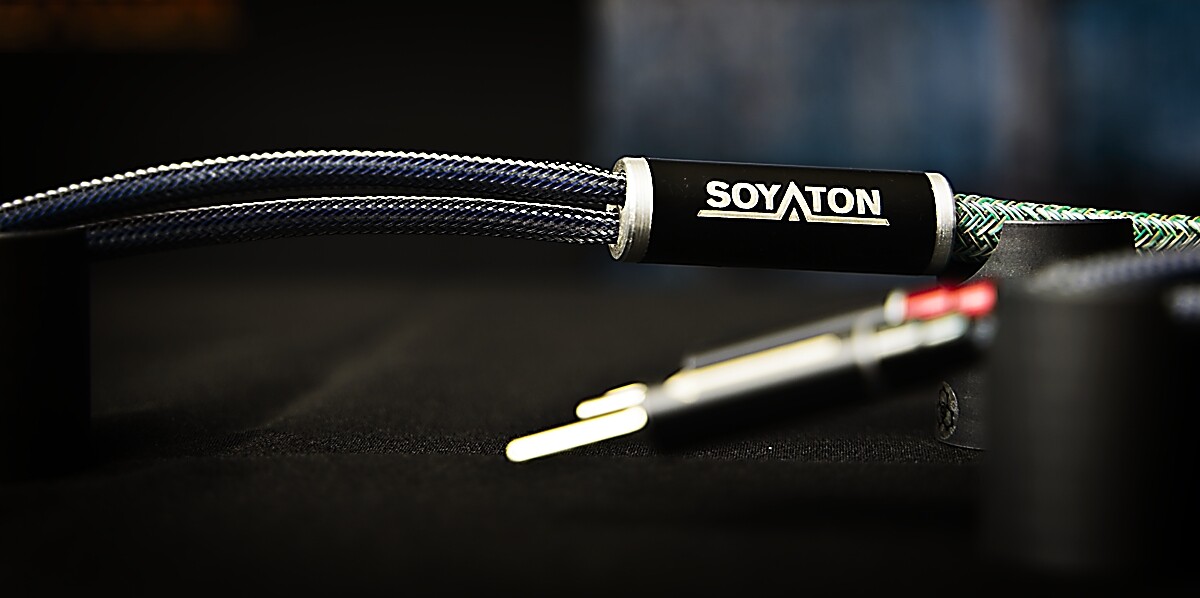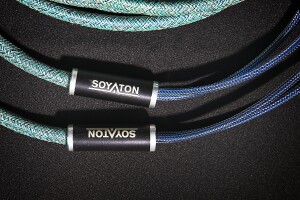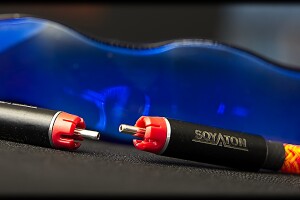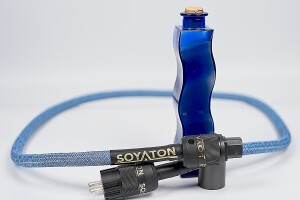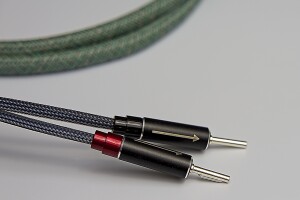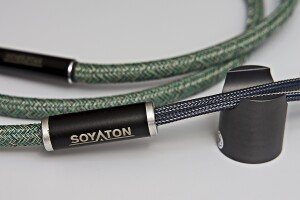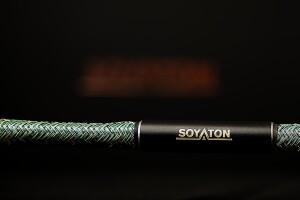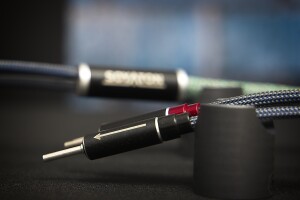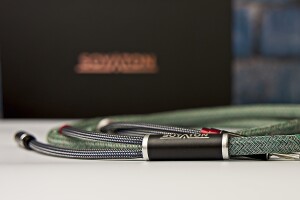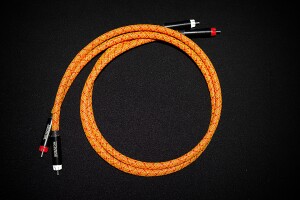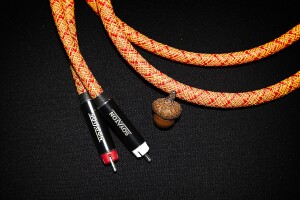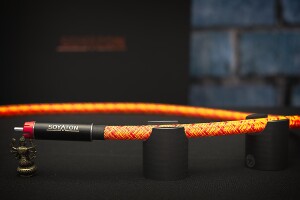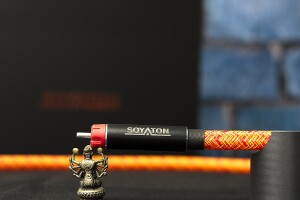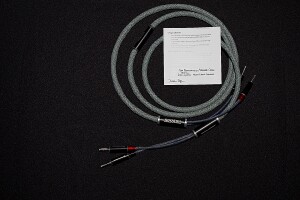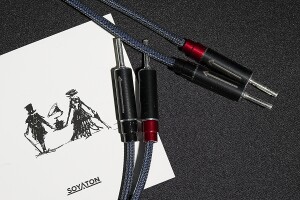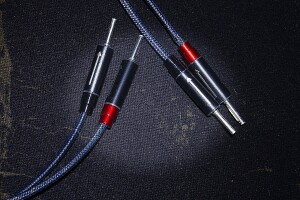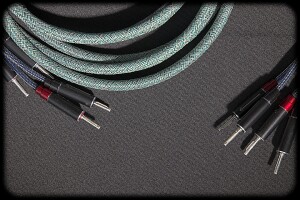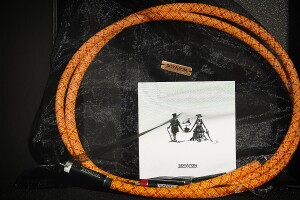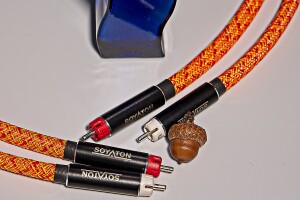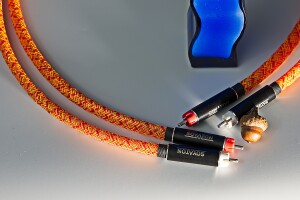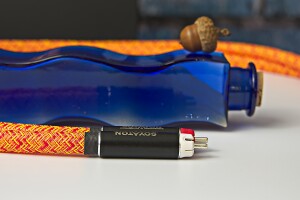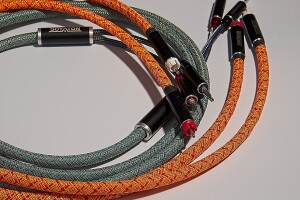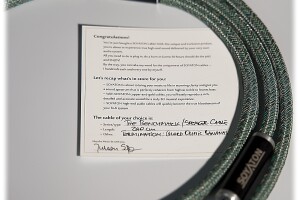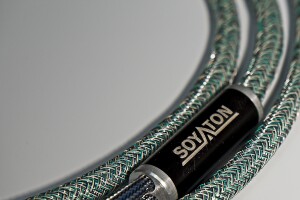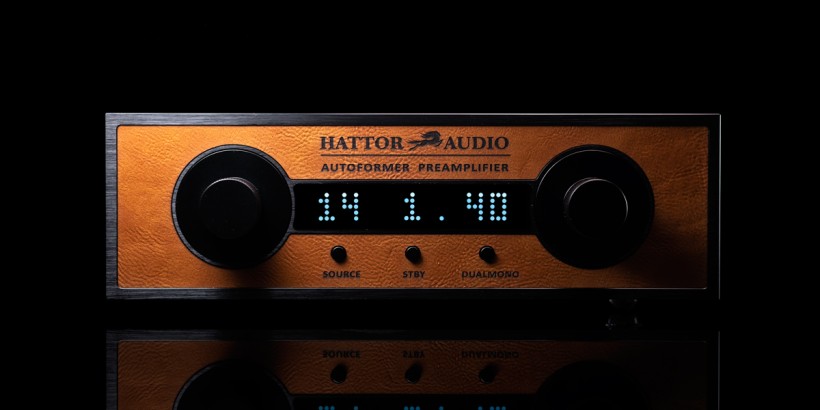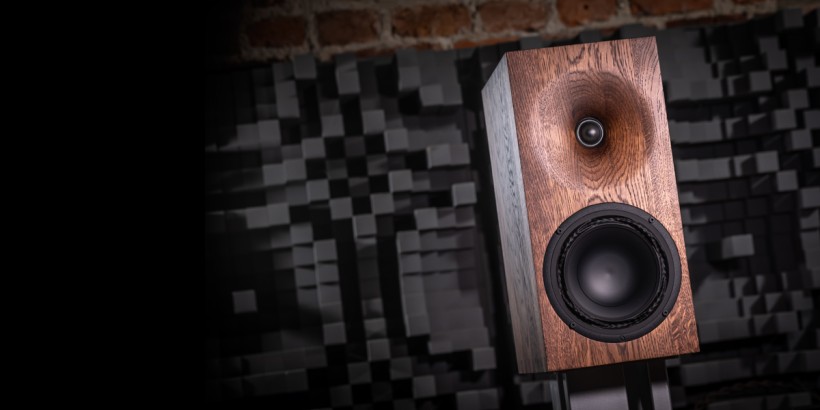Encouraged by the new cabling of my phenomenal J.Sikora KV12 tonearm from Soyaton, I asked its boss, Mr. Julian Soja for a set including RCA interconnects and speaker cable. Not only he agreed but he sent me the latest mk2 version. Do Soyaton Benchmark mk2 cables deserve the bold name? Let’s find out.
Introduction
It so happened, that me, a man who had never been that much into cables, over the past several months tested quite a lot of these. It’s not that I haven’t appreciated the role of cables in an audio system, but rather that for me they have always been a ‘cherry on the top’ so to speak, an element that is supposed to be a finishing touch rather than one that decides the class or character of a system. So whenever I read some revelations about cables, whether interconnect, speaker or power ones, that ‘totally changed my system’ I couldn’t resist thinking that it was not the cables’ job to decide the sound of any given setup. They are supposed to ‘connect’ one component with another (with exception of power cables, obviously), and ‘faithfully’ or ‘losslessly’ transfer a signal between them.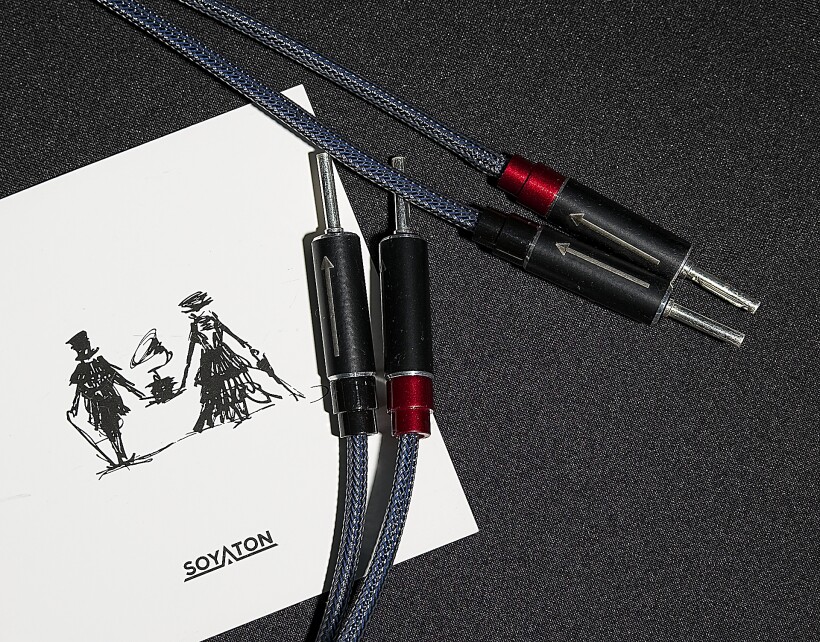
I remember that several years ago there was this unwritten rule that said one should spend around 10% of the whole system’s value on cables. Today the prices of audio components are way higher than back then but it seems that the role of all ‘additional’ (although in the case of cables necessary) components such as cables, anti-vibration, or power-related products increased. They often cost way more than 10% of the total system’s value and their role is perceived by both, reviewers and users, as much bigger than in the past. And it’s not just us, home users, but it has also taken root in pro-industry with engineers in recording and mastering studios realizing the value of high-quality audiophile products and starting to use them to achieve even better results doing their jobs. It’s not even controversial anymore to claim that, particularly in high-class systems, cables are treated on equal footing with any other component.
I admit that I have learned to appreciate the role of cables and other (sensible) accessories more, but I haven’t changed my mind about what one should focus on when developing a system (electronics and speakers) and what is still only to be used to dot the i’s and cross the t’s. So whenever I write about some expensive cables and recommend them I don’t mean one should buy them for a system that will double its value after these are added to it. It is not the way, or at least not the right/best/shortest way, to success, because what should decide about the system’s performance are still sources, amplifiers, and speakers, and all the rest is there to facilitate optimal conditions for the basic components to spread their wings, so to speak. Cables in this complex environment are there to take care of as faithful signal transfer as possible.
The reason behind some of them sounding ‘better’ than others in a particular system may be twofold. Either they better do the job I’ve just described, which means that they allow the connected components to better present their potential or they modify the sound in a certain way that suits the user more, that fits better into their expectations and preferences. To be honest, It is often hard to say which one is true. It does matter if your goal is maximum fidelity. It doesn’t matter if fidelity is not the ultimate goal but rather listening to the music in a way that moves or satisfies you the most. That is why there are so many brands offering cables around the world and that’s why you can always find some of them that will suit your needs best.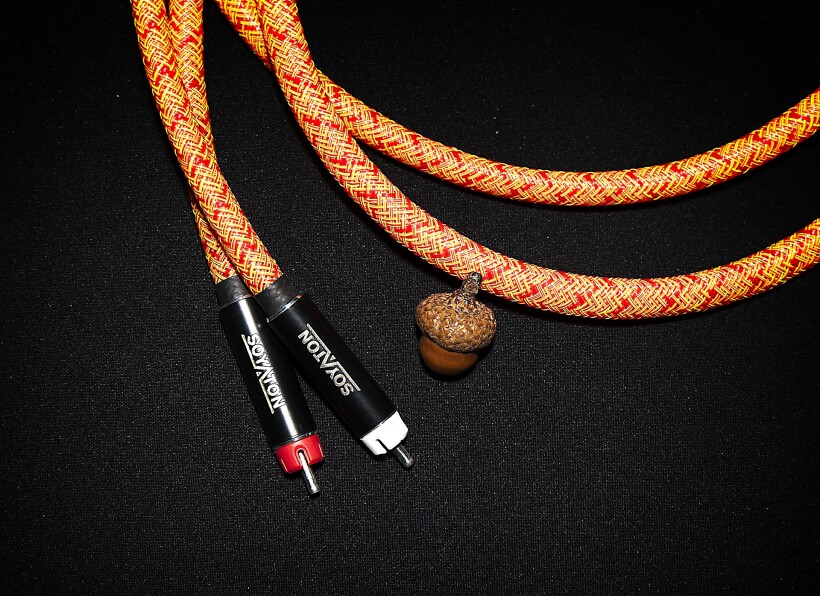
Everything you’ve read so far may seem like an odd introduction to cable review. I hope you will not misinterpret it. I do not belittle the role of cables in an audio system, far from it, because unless one uses battery-powered or wirelessly connecting components cables in a system are a must and they always (!) have an impact on the sound that ultimately comes from speakers. I would like to make sure that every one of my cable reviews should be treated as a mere suggestion, a hint regarding interesting products among all these hundreds of brands available on the market. You may also learn from them what kind of changes these may introduce to the sound particularly if I can check them out in more than one setup (which I usually am). You mustn’t treat cables as a ‘cure’ that will solve your system’s problems. Let me repeat once more – audio cables are supposed to help you enhance the performance of components they connect (by releasing their full, or at least a bigger chunk of their potential). They can also help you ‘tune’ (but not ‘repair’!) the setup’s performance to a point so that you can enjoy the music even more. OK, enough with the ‘lecture’. Let’s move on to the objects of this review, the Soyaton Benchmark mk2 cables.
Our readers should already be familiar with the Soyaton brand since Dawid reviewed the first version of their Benchmark speaker cable a while back. On the other hand, in HighFidelity Wojtek Pacuła tested the first version of the Benchmark RCA interconnects. In other words, everything has already been described so why would I do it all over again? Well, some of you may have noticed that I have mentioned already in several reviews that I have been using another version of the fantastic J.Sikora KV12 tonearm. In my opinion, as some other big names in the industry seem to agree, it is one of the best currently available tonearms in the world. What is special about J.Sikora’s products is that most of the parts and components for their turntables, power supplies, and tonearms they make in-house. There are some exceptions though, manufacturing specialized motors, for example, wouldn’t make much sense (they don’t need that many to make such development and production profitable), and the same goes for tonearm cabling. It makes much more sense to purchase these elements from other specialist companies.
The wires inside the arm’s tube, as well as the interconnect terminated with high-quality plugs, have been sourced from the start of the renowned Polish manufacturer, Albedo. The brand specializes in manufacturing (mostly) silver conductors and selling ready-made audio cables featuring this material, also KV12 sports cabling made of mono-crystalline silver. And that’s what I’d been using from the start in my arm. Yet, several months ago, Janusz Sikora prepared a new tonearm for me. I wanted to have one with a detachable interconnect – for me, as a reviewer, it is a more practical solution as it allows me to review phono cables. As it turned out he had a surprise for me. The KV12 he brought with him was wired using a different conductor. It wasn’t silver from Albedo anymore but one from … Soyaton. Same as the cables by this brand, J.Sikora’s arm featured conductors made of high-quality Japanese copper, that is shipped to the USA to be gold-plated there and then comes to Poland and is used in both, Soyaton cables and J.Sikora tonearms.
The original version of the KV12 with the silver wiring was and still is terrific, and you may have read about it in my review (see HERE). The latest version with the different wiring offers a bit different sonic character but it is (at least!) as good as the original (from my point of view it is even better). In the not-so-distant future, you can expect a review of the new J.Sikora KV12 Max Zirconium Series arm, which premiered at the Audio Video Show 2022 in Warsaw, in either a 12 or a completely new 9-inch version, and with the Soyaton cabling. I have mentioned it simply because the experience with my tonearm with the replaced cabling was what inspired this review. I knew from experience, that using more than one cable from the same manufacturer often produces very good results, so I wanted to know if using another interconnect and speaker cable would deepen the effect of tonearm cabling replacement. The man behind the company, Mr. Julian Soja, was kind enough to grant me my wish also because he had just made changes to his lineup introducing mk2 versions of the RCA interconnect and speakers cable. He sent me such a set with a bonus. The latter was a prototype of his power cable. Actually, since the English version of the review will be released after the Warsaw Show, you may know that the final, production model of the Benchmark power cable premiered at the Show. Hopefully, I will get a chance to assess it soon.
What’s more, while preparing this review I received an invitation to one of the meetings of the Krakow Sonic Society (that you may know from the other magazine I write reviews for, HighFidelity.pl. I couldn’t resist accepting the invite to have an excuse to visit one of my favorite cities, and the former capital of Poland, Krakow. Due to the pandemic, it’s been a while since I last wandered through Krakow’s Old Market, Florianska Street, visited Wawel Castle, and so on. The main reasons, however, were the chance to meet Paweł „Bemol” Ładniak, or one of our best mastering engineers who was there to talk about the secrets of his job, as well as the fact, that the meeting was to take place in the famous „Green Cave”, or a beautifully arranged and well-prepared (in terms of acoustics) Julian Soja’s room. That’s where he listens to music and develops his cables. I couldn’t miss an opportunity to find out what Julian’s system sounded like.
I won’t describe the meeting, as I was only a guest there, and you can find the coverage of the meeting on HighFidelity.pl in Wojtek Pacuła’s report. Let me only say, that I was right having high expectations as Paweł „Bemol” Ładniak turned out to be a great storyteller. He not only shared a lot of knowledge and experience but also let us listen to some music (from tapes and files) that he worked on, including some source material. I stayed also after the meeting to learn more about Julian’s tools (system) that he’d used while developing the Benchmark series. The room is isolated from the rest of the house so one can listen to music there any time of day or night. Importantly, with the help of Tomek Kursa (AudioForm) they worked out the room acoustics. It took me a while to get used to the ‘sound’ of the room, as mine is a living room with only partial room treatment, not a full-on one, like the ‘Green Cave’. My first impressions were (to a point) similar to those from several anechoic chambers I had a chance to visit (in Phillips or Focal headquarters, for example). Obviously, the ‘Cave’ was not as damped, or as ‘quiet’ as those rooms, but surely the acoustics was different than in my room, or many others that I knew.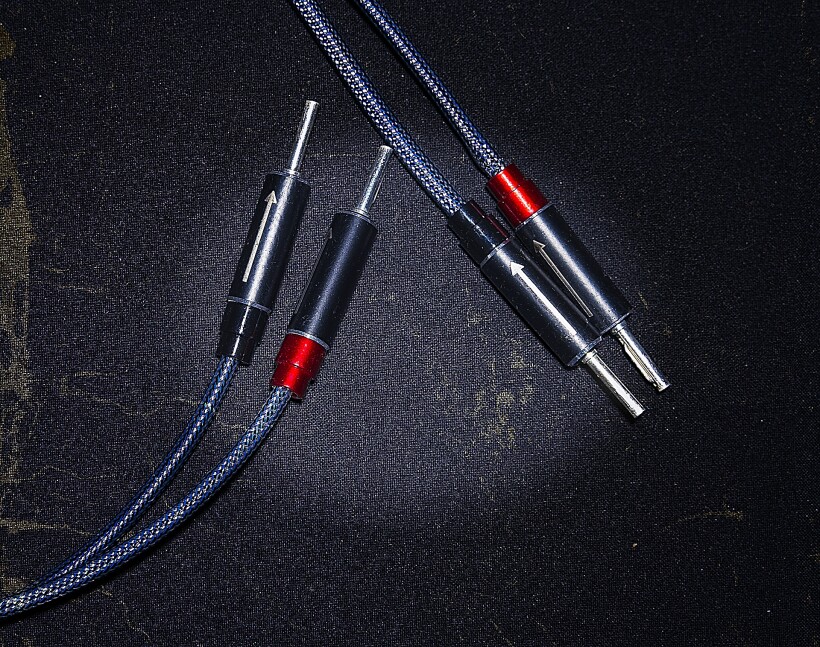
The system is based on tube devices, it includes all main types of sources – high-quality CD transport, reel-to-reel tape recorder, a turntable, streamer, and DAC, which allows Julian to use all types of music carriers including music files in any format and resolution. All system, apart from digital cables, uses Soyaton Benchmark mk2 loom. Some, myself included, would love the sound of the system, others probably not that much – after all, each of us has our preferences and expectations – but I believe that regardless of tastes most people would admit the class of this setup. An important observation, both during Paweł Ładniak’s presentation, and later when we just listened to music, was that the system very well presented differences between various files and carriers, sources, and ‘processed’ material. It proved that the whole system, Julian’s work tool, as well the Benchmark mk2 cables, were able to differentiate recordings well whatever it had to play, resolving and precise which allowed us to almost effortlessly notice all those differences. One more thing was incredibly important to me – while doing such a good job differentiating music materials, and giving us a good insight into them, it was also highly musical and involving even when we used recordings of lesser quality.
Design and features
The description on the manufacturer’s website is rather short. One reads there that Soyaton Benchmark mk2 cables feature conductors made of high quality and high purity (6N) Japanese OCC (Ohno Continuous Cast) copper. These are shipped to the USA where they are gold-plated with a thin layer of 24-carat gold. Then, the gold-plated wires are painted using a special transparent lacquer and then there are fitted into tiny silicon tubes with air acting as a dielectric. The whole cable manufacturing takes place in Soyaton’s headquarters outside Krakow.
The cables are not shielded, but the well-thought-through, tested geometry protects the signal running through the wires from EMI and RFI. The outside layer is a high-quality sleeving – an orange one for interconnect, a green one for the speaker cable, and a blue for the power cable. The standard length of the speaker cable is 2,4 m and they are terminated with high-quality ChordOhmic banana plugs made of silver-plated copper. The RCA interconnect is available in two standard lengths of 100 and 150 cm. For this purpose, the designer selected KLE (Keith Louis Eichmann) CLASSIC BULLET plugs made also of silver-plated copper.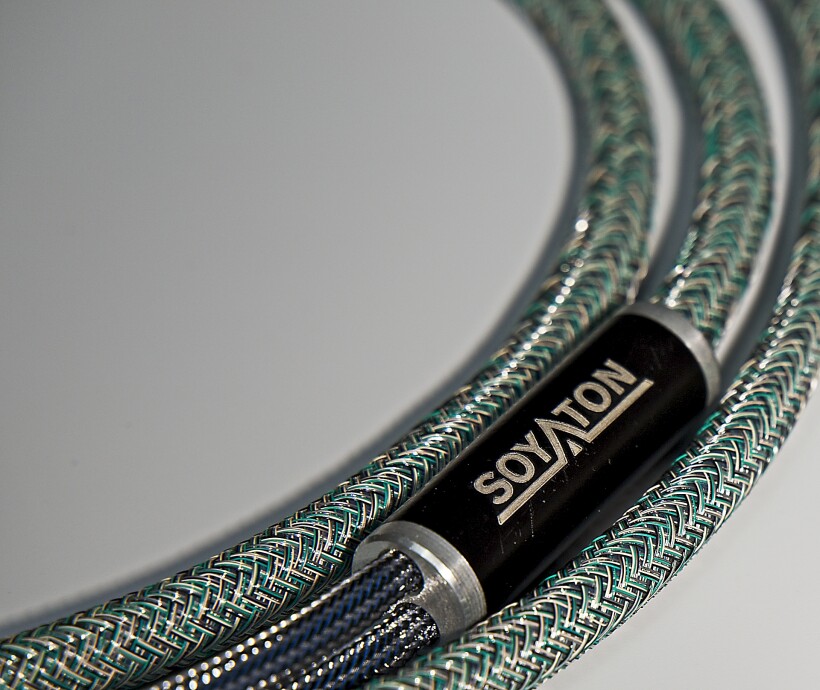
I tried to ask the designer about the changes introduced to the Soyaton Benchmark mk2 design compared to the originals but he preferred to keep them to himself and not to make competitors’ lives easier. What anyone can see is a more sophisticated external design with some elements such as plugs bodies and splitters (on speaker cables) that look much better now. Before finishing this paragraph let me mention two more key features of these cables, according to the manufacturer, namely the low capacity and high electric conductivity. Such an approach allowed him to make cables that are not very thick and are quite flexible. Due to these features, it should be quite easy to install them in any system.
Sound
Benchmark mk2 IC RCA
Since both cables, at least in the original version, had already been reviewed I decided to treat them as a set. Still, I wanted to maintain my standard procedure meaning I start my listening sessions by adding one cable (or a pair) at a time replacing my reference counterpart. Later I add/replace the next one, and so on if there are more cables in a set. In this way, I look for the synergy effect, which often occurs if more than one type of cable of a said manufacturer is used. That is why I started with the Soyaton Benchmark mk2 RCA interconnect that replaced my trusted Hijiri Million Kiwami. It is true, that after the Roberta Bastani Imperial ICs reviewed I purchased both for my system as an alternative reference to the Japanese cable, but since the masterpiece from Mr. Kiuchi had been with me much longer I decided to use it in this test as the point of reference.
Kiwami, which I mentioned multiple times in my reviews is a highly resolving interconnect delivering an abundance of details and subtleties that translates into a rich, even dense, tuneful sound. It combines a unique fluidity and musicality with terrific coherence, a beautiful „tube” treble (vibrant, airy, pure, but also a touch sweet and delicate) with powerful but not very tight bass. Replacing it with the tested Soyaton Benchmark mk2 quickly showed me some differences between them, as well as some similarities. The sound my system delivered with the Polish cable was not quite as dense, as rich, and as colorful (I’d like to emphasize the ‘as’ part), although still, the midrange was still the key aspect of the whole presentation. The truth is, that the Japanese interconnect stops short of crossing the line (and delivering an unbalanced, truly midrange-focused presentation), hence almost all other cables in comparison seem to deliver not as fabulous (although probably a bit more realistic, or true) midrange. Soyaton Benchmark mk2 on the other hand seemed to open the presentation, even more, filling it with more air, hence giving instruments more space to breathe. Benchmark mk2 seemed to deliver a more vivid and lively performance, one that was ‘lighter’, but it wasn’t a result of sound lacking richness or proper weight, but this amazingly effortless way of delivering any recording, any music genre.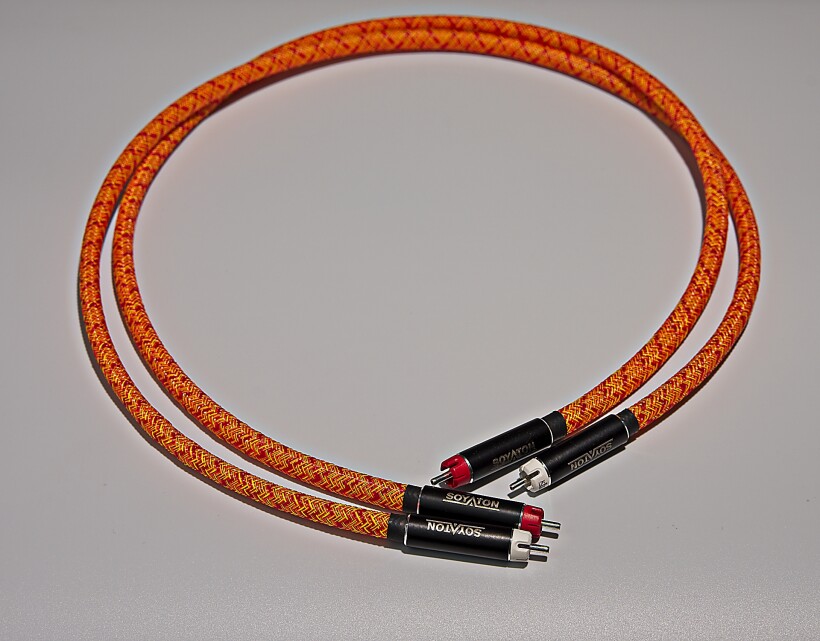
Also as a direct result of this slightly less rich type of presentation (again – in comparison with Kiwami, as objectively one couldn’t complain about Soyaton Benchmark mk2 richness) lower end of the range sounded differently. With Benchmark mk2 it was fast, tight, and well-differentiated, although there was a bit less weight in it, and the lowest notes didn’t have as much kick as with Kiwami. The attack phase, its speed or immediacy were slightly more important than sustain and decay, although again, the latter wasn’t objectively lacking at all as I didn’t feel it shortened. Despite the differences in both cases, the presentation as a whole was equally coherent, fluid, natural, and highly enjoyable, which means that these cables had a lot in common. Both, Soyaton Benchmark mk2, and Kiwami focus the listener’s attention rather on the music, and not on the technical aspects of a played recording. Yet, as I have already mentioned, due to high resolution they differentiate recordings well allowing those who want to focus on these aspects to assess the recording, mastering, and release quality.
It’s been a while since I started and kept using the Jacques Loussier „Pulsion” in my tests. This high-quality recording is not much younger than me, and it features (in my opinion) amazingly well-recorded drums (among other instruments). The kick-drum is fast and properly hard, and the cymbals are also vibrant and crisp, and all that must have been skillfully recorded from up close, which is quite unique. The tested Soyaton Benchmark mk2 delivered it in a very convincing, dynamic, almost realistic way. The performance was very energetic, agile, and highly involving from the very first till the very last note. It was captivating, forcing me to focus not to miss any detail, any subtlety so brilliantly recorded. It sounded fresh, and immersive even despite the fact, that I must have played this album dozens of times over the last few months and I know it almost by heart. Soyaton Benchmark mk2 kept me focused, involved, and interested and even surprised me with some details from time to time.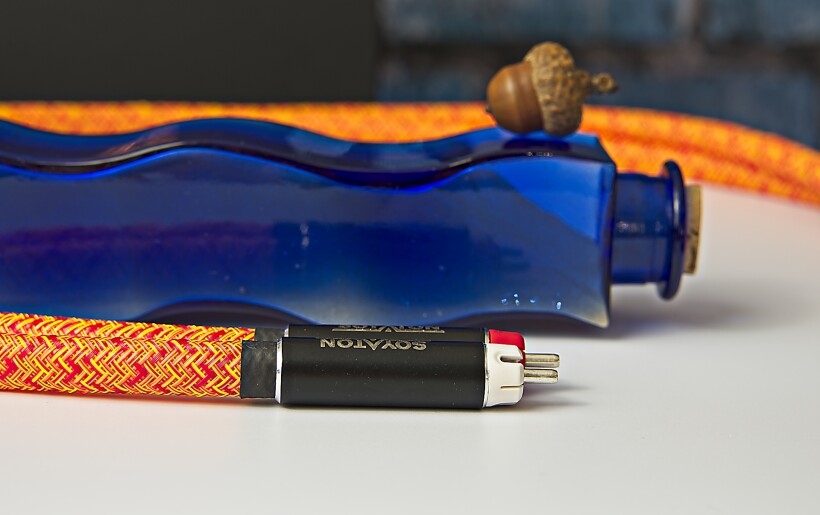
I have mentioned before, that the bass with benchmark mk2 does not have as much slam as Kiwami, you can’t feel (not hear) it as much, but it concerns only the lowest tones. The drums don’t really go that deep and are more about speed, tightness, the springy response of drums membranes, and all these elements Soyaton delivered in a very convincing way. The album is not only about the drums, obviously, but also about the maestro’s piano. One thing was the very well-presented timbre and texture of the instrument, but even more impressive was the ability to deliver even the fastest keystroke and, when needed, damp the sound as quickly and render a totally ‘black’ silence/background, even if only for a split of a second. In these respects, it was the Benchmark mk2 that had a slight advantage over Kiwami, although it was Mr. Kiuchi’s interconnect that had an edge when it came to delivering a long decay and reverb and cymbals and piano. While in the previous recordings, it seemed to me, that the lowest end was not as weighted as with Hijiri, on this album whenever Jacques played powerful accords I could not only hear but also feel the size, weight, and power of this great instrument in a similar way as with the Japanese cable.
+ Soyaton Benchmark mk2 speaker cable
Replacing the LessLoss speaker cable, which I’d been using for years and that had done a good job in almost every setup (and there were hundreds) with Soyaton Benchmark mk2 confused me at first. The sound stage widened and opened so much that I had to check again whether all the connections on both ends had been done properly. You can hear such a huge change in the sound stage when there is an out-of-phase connection, although at the same time it is hard to point out specific phantom images. Here everything seemed in order, with proper focus, but the sounds coming from the outer sides of the left and right speakers were so surprising that I decided to check the connections once more.
As it turned out, everything was done properly, there was no mistake on my side. So I could move back to my armchair and put my first impression down in writing: enormous, yet not artificially enhanced sound stage. I tried to recall any other cable set that would have been that impressive in this particular regard and I couldn’t remember any. I’d been doing it for a while, so maybe I could have forgotten a case or two, but even if it were the case, I had no doubts that Soyaton Benchmark mk2 was unique in this regard, even the best among all the cables I’d ever listened to in my system. Let me emphasize once more, that the presentation did not seem ‘enhanced’ or ‘blown up’. It became clear after several albums as the size of the stage changed depending on the recording – huge on some, way smaller on others. Such a convincing differentiation of the spatial aspects of the recordings confirmed that the Benchmark mk2 simply did a much better job than any other cables in revealing the actual spatial information stored in the recording.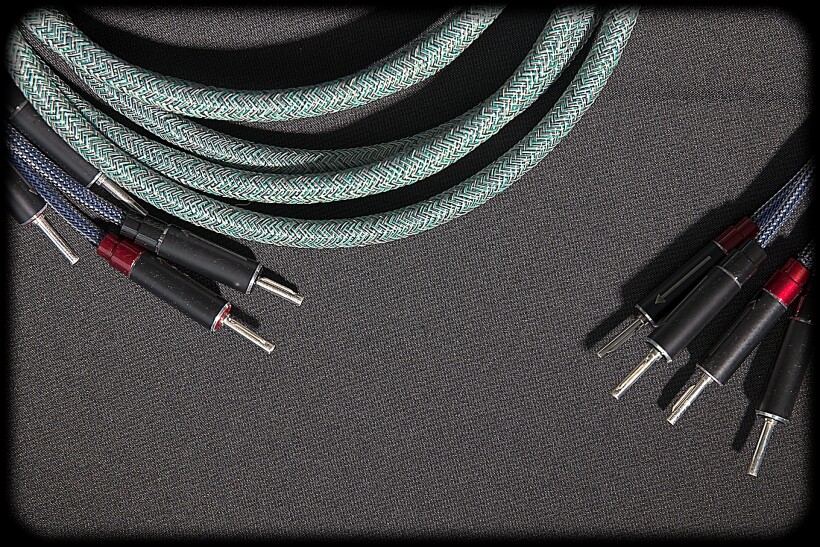
Further trials revealed that the effect is most impressive when both, the interconnect and speakers cable were used together (the synergy effect), but between these two a larger portion of the job was done by the speaker cable. After experiencing what the Soyaton loom could do I couldn’t resist reaching for some particularly spectacular in this regard recordings. Such as, for example, my favorite „Carmen” with Leontyne Price (on RCA Red Seal) or Michael Godard’s take on Monteverdi on „Trace of Grace”, or Arne Domnerus’ „Antiphone Blues”. With the last two and Soyaton Benchmark mk2 cables set I could clearly hear the huge spaces of, respectively, Noirlac Abbey, and Spanga Church, and in the Bizet’s opera the huge depth of the stage with the choirs marching far behind the palpable, and present foreground. In each case the precision each phantom image was placed on stage with, and the imaging was truly impressive, vide the soloists in the foreground in the „Carmen”. The imaging compared to my Kiwami (even when paired with Soyaton’s speaker cable) delivered by Benchmark mk2 IC was slightly more precise, with the images in the front being better separated from the background, while the Japanese cable based their presence rather on palpable mass. Despite using different means both interconnects delivered stunning presentations.
Another great performance due to Soyaton Benchmark mk2 spatial abilities I heard listening to The O-Zone Percussion Group’s „La Bamba”. Not only is the large group of percussion instruments spread wide across the stage, but also the depth of the latter is impressive and the distances to each instrument are very well captured. Soyaton cables built a stage much wider than the distance between the right and left speakers and reached far beyond the wall behind them. Importantly, they delivered pinpointed locations of every instrument and terrific imaging of each of them. Timpani was indeed more massive with Hijiri, but all the metal instruments sounded more… metal, more vibrant, and crisp with Benchmark mk2. The Japanese interconnect slightly sweetened the treble, and the Polish cable, while keeping the sharpness, and brightness of high tones in check presented them in a more true, more refined way. The aforementioned speed and tightness of the attack, necessary to properly present percussion instruments, were additional qualities offered by the Soyaton Benchmark mk2 set.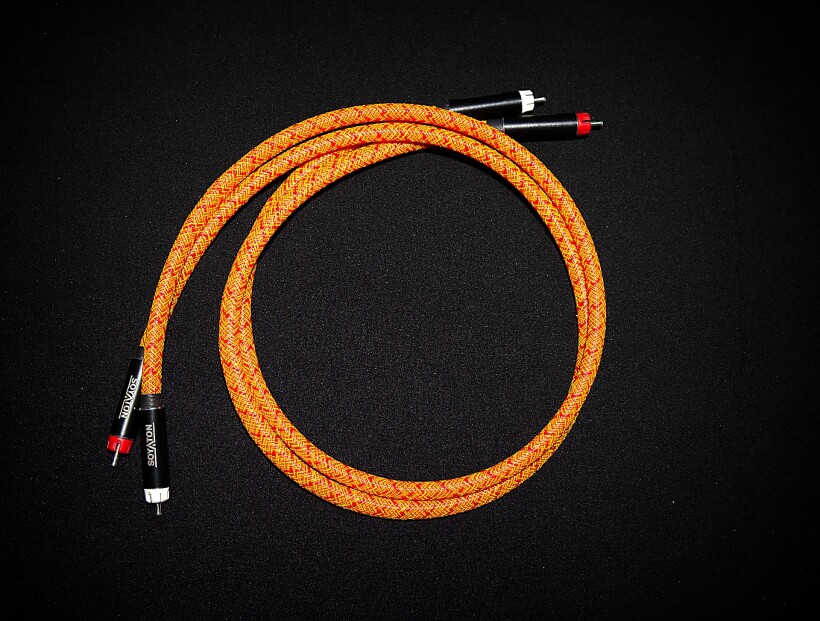
Yet another quality, I should have mentioned from the start, is the excellent dynamics of the Benchmark mk2’s presentation. And it goes for both, micro and macro scales. I got all the proof of that while listening to The O-Zone Percussion Group, but also to the excellent (in terms of music, a bit less so in terms of recording quality) soundtrack from the (original!) „Predator” or Beethoven’s IX Symphony with Boehm conducting Wiener Philharmoniker. Particularly in the last two recordings, instant transitions from the quietest to the loudest moments and the other way around, with Soyaton Benchmark mk2 were immediate, perfectly building a unique atmosphere of these, very different albums
Various setups
After getting to know Julian’s cables I started to use them in other tests I was doing at the time. For example, I used the Soyaton Benchmark mk2 with additional shielding (which adds another 250 EUR on top of the price of a 1m long pair), prepared with turntable owners in mind. It did a great job while reviewing the Transrotor La Roccia Reference (see Polish version HERE) confirming all the qualities of a ‘standard’ version described above. I used the whole set also when reviewing the Accuphase A-48 power amplifier paired with the excellent LampizatOrem Pacific as a source and Allnic Audio L-9000 preamplifier. I was looking for the best partner for the Accuphase and it downed on me that it could be a good idea to use the tube Allnic Audio, and Soyaton cables. I mentioned in the A-48’s review (about its pairing with Accuphase C-2900 preamplifier), that its sound (using Siltech Legend cables) was very rich, dense and I wanted to add some air to the mix, some ‘lightness’, which, as I already had known, were qualities offered by Benchmark mk2. They did exactly that and after I’d finished the review I switched the same brand’s preamplifier for Allnic, a remarkable device. To be honest, I liked this setup even more, although it was a matter of individual preferences. Using three Benchmarks in this system sort of ‘amplified’ all of their qualities but without going overboard with any of them, so to speak.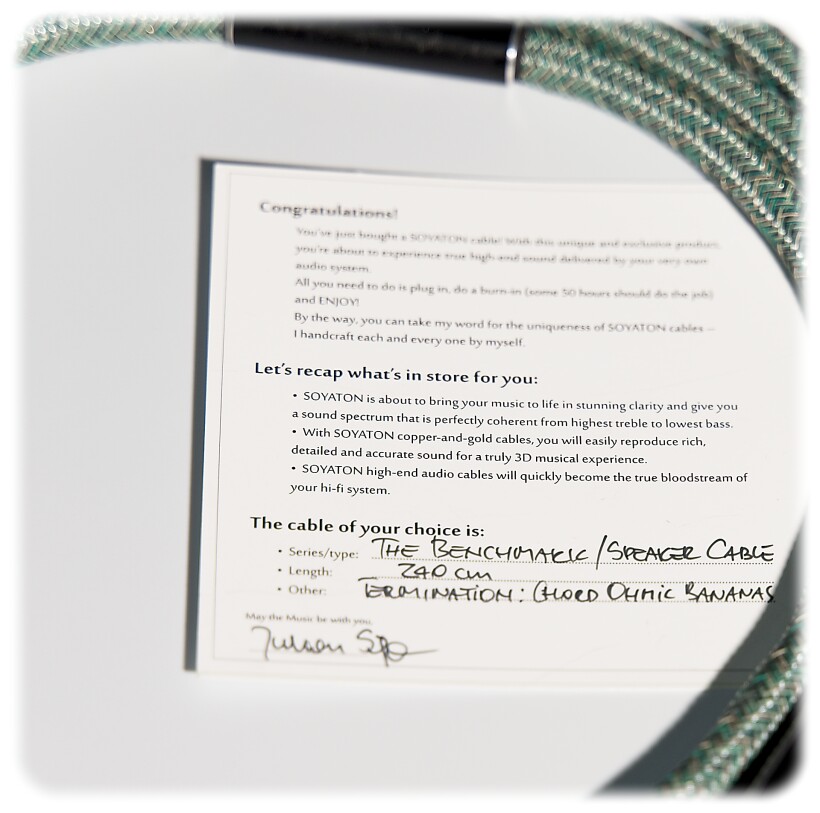
Based on my experiences with my own GrandiNote Shinai, Allnic Audio T-1500 MKII (a 300B SET), and multiple other devices, both solid-state, tube and hybrid ones that passed through my system over the few months I spent with Soyaton set, I draw a bold, not necessarily 100% accurate conclusion. I shared this conclusion with the designer, who seemed to be genuinely surprised by it. Namely, the more components with tubes on board were part of the setup, the more I appreciated the Benchmark mk2 set. As a digital source, I mostly use my LampizatOr Pacific (a tube DAC, of course) and whenever Soyaton’s interconnect connected to a tube (or hybrid) preamplifier or amplifier, in my opinion, it was the optimal, the absolute best setup possible. Optimal for my needs or taste – even as a reviewer I can’t quite escape those.
On the other hand, when I used a pure solid-state setup (both of my phono stages are s-s devices) it wasn’t so obvious anymore. By that I understand that depending on the amplifier, and sometimes speakers in some cases I preferred Kiwami, or Bastanis Imperial, meaning they did an even better job than the excellent Benchmark mk2. In other words, with at least some tubes in the signal path Soyaton cables seemed best for me, without any valves, my preferences were not so unequivocal. Please remember, that I consider both Hijiri and Bastanis as remarkable, top-notch cables, and I hope it is already clear that in my opinion Benchmark mk2 belongs to the same category. A category in which the focus is on music, not sound analysis, emotions, and not studying technical aspects of recordings. It is also a top-quality, highly refined presentation that allows Soyaton Benchmark mk2 to take its place among a not-that-big group of high-end cables.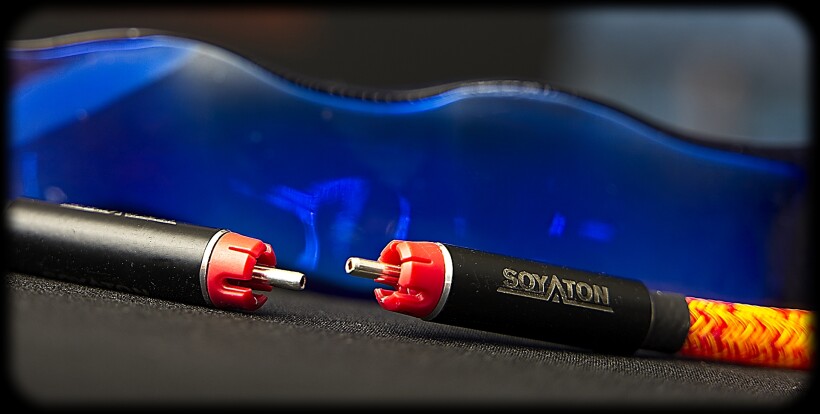
Prototype power cable
I mentioned at the beginning, that I also got a prototype power cable from Julian. In the meantime, its production version had its premiere at the Audio Video Show 2022 in Warsaw and I will surely review it soon. Hence I didn’t analyze its performance as carefully as that of interconnect and speaker cable. It was clear that the final product would differ to some extent. I guess what will not change is the DNA shared with other Benchmarks. Adding the power cable (using it with the Pacific and phono stages) to the mix sort of enhanced all the qualities presented above even further. Yet, if I were to point out a particular strength of this prototype I would say that it introduced a bit more ‘life’ and energy to the sound, and some drive when needed.
Just like when I listened to one of John Neptune’s albums with a lot of brass, wind, and percussion instruments that, with the prototype sounded in a more lively, (positively) aggressive, and energetic way. I’d even say, they sounded sharper and thus more ‘in character’, more natural. The attack phase of the percussion instruments seemed to be better pronounced, faster, and harder, which even further enhanced the perception of the sound as being more lively and energetic. I can’t tell you yet, what the final result of this product’s development is, as the AVS is not the place to reliably assess any system, let alone one of its components, but I can say, that already the prototype was a really good product and a great addition to the Benchmark family. All three (or even four) cables used together in a system offered more than a simple sum of their advantages, in other words, they offered a true synergy effect.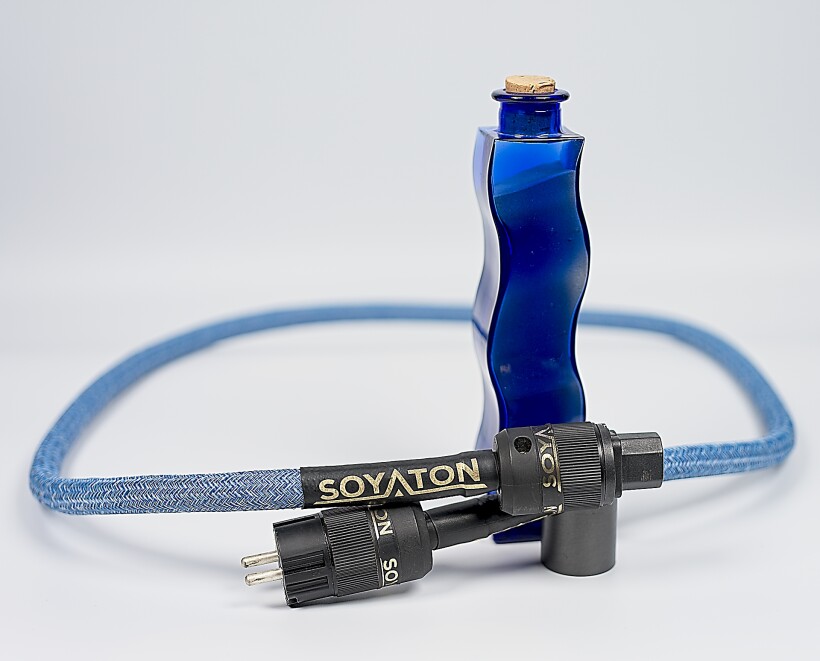
Summary
What is the best summary for my extended experience with Soyaton Benchmark mk2 cables? I’ve already stated that for me these are the best cables for tube systems that I know (I guess the top-of-the-line Kondo counterparts could compete on at least equal footing and the result of such comparison would be uncertain). It’s just that I don’t want you to walk away from reading this review with the message „cables for tube systems only”. That is not true! They did an excellent job in purely solid-state setups too, but my preference and/or assessment of their performance compared to Hijiri Kiwami or Bastanis Imperial (interconnects only!) was not that clear. In some cases, I preferred the Japanese cable, sometimes the German one, and sometimes Soyaton. So let me put it this way – all these three interconnects come from the same, really high shelf. Benchmark Mk2 set offers as outstanding, refined, and resolving sound as my other reference interconnects.
Same as the other two, Soyaton Benchmark mk2 offers an immersive, even addictive experience that never does get boring, or fatiguing, that I couldn’t get enough of. Let’s add to it the remarkable ability of the set (IC + speaker cable) to render a much more spatial presentation than any competitor I know, impressive dynamics, fast, tight bass, vibrant, energetic treble, and a rich, yet pure and open midrange and it leads us to a level of ‘must hear’ components. And since I believe, Soyaton Benchmark Mk2 are beautifully hand-crafted and represent the same, top level of performance as Hijiri Million and Bastanis Imperial, they fully deserve our Victor Award.
PS. I’ve been listening to the set even after finishing the review and finally… instead of sending them back, I decided to add yet another reference to my system. First of all, they fully deserved it (!), and secondly, I couldn’t imagine parting with them. It means that Soyaton Benchmark mk2 IC will be one of my references along with Hijiri Kiwami and Bastanis Imperial, and the speaker cable will replace my old LessLoss.
Prices (when reviewed):
- Soyaton Benchmark mk2 IC RCA 1m: 2.500,00 EUR / 1m (+250 EUR for additional shielding)
- Soyaton Benchmark mk2 speaker cable 2,4m: 4.100,00 EUR
Manufacturer: SOYATON
Associated equipment:
- Digital source: a custom passive server with WIN10, Roon, Fidelizer Pro 7.10, JCAT NET XE, and JCAT USB XE cards with FERRUM HYPSOS Signature power supply, KECES P8 (mono) linear power supply for the server, JCAT USB Isolator
- D/A Converter: LampizatOr Pacific +Ideon Audio 3R Master Time (USB signal regenerator)
- Analog front end: J.Sikora Standard MAX turntable, J.Sikora KV12 tonearm, AirTight PC-3, phono stages: Grandinote Celio MK IV, ESE Lab Nibiru V 5.
- Power amplifiers: GrandiNote Shinai
- Preamplifier: Audia Flight FLS1
- Loudspeakers: GrandiNote MACH4, Ubiq Audio Model ONE Duelund Edition.
- Interconnects: Bastanis Imperial, Hijiri Million, Hijiri HCI-20, TelluriumQ Ultra Black, KBL Sound Himalaya 2 XLR, David Laboga Expression Emerald USB, David Laboga Digital Sound Wave Sapphire Ethernet
- Speaker cables: LessLoss Anchorwave
- Power cables: LessLoss DFPC Signature, Gigawatt LC-3
- Power: Gigawatt PF-2 MK2 and Gigawatt PC-3 SE Evo+; a custom power line with Gigawatt LC-Y in-wall cable; Gigawatt G-044 Schuko and Furutech FT-SWS-D (R)
- Network: Silent Angel Bonn N8 + Silent Angel Forester F1 + optical LAN isolator
- Racks: Base VI, Rogoz Audio 3RP3/BBS
- Anti-vibration accessories: ROGOZ-AUDIO SMO40 and CPPB16 platforms and ROGOZ AUDIO BW40MKII feet, Franc Accessories Ceramic Disc Slim Feet and Wood Block Platform, Graphite Audio CIS-35 and IC-35


